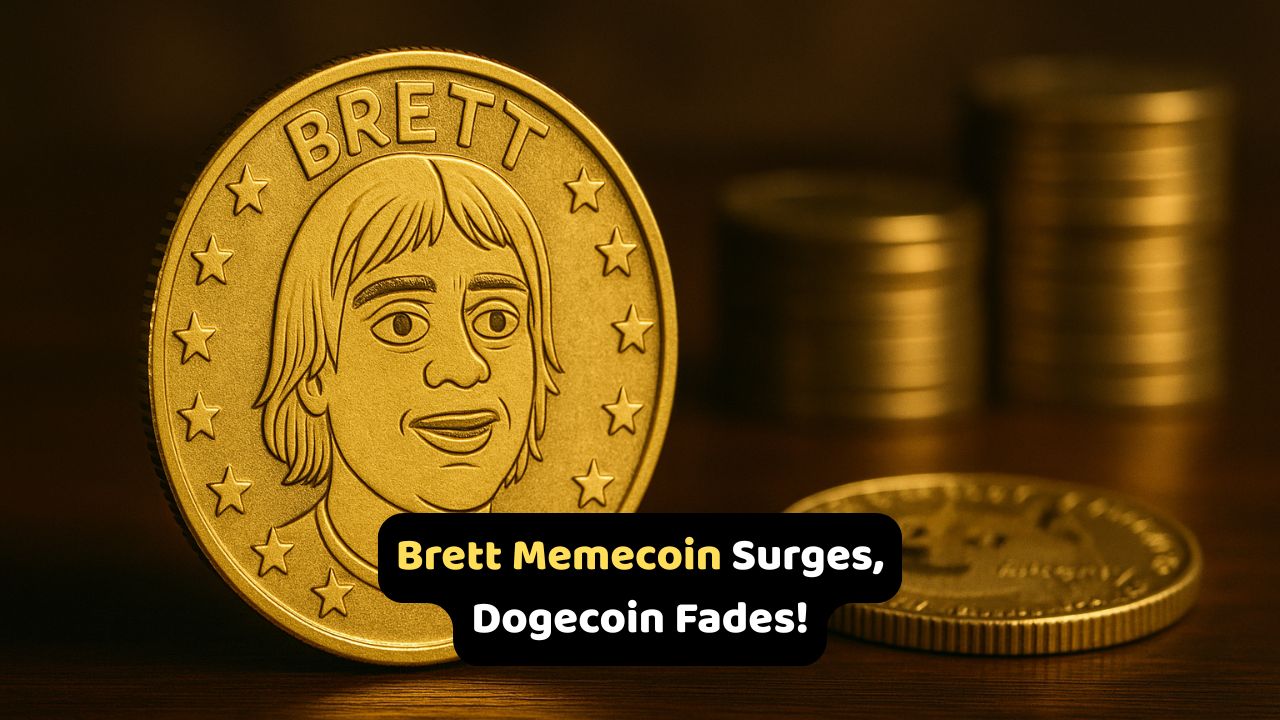Memecoin Layer Brett – The crypto world is buzzing once again, and this time the spotlight is on a rising memecoin called Layer Brett. While Dogecoin has been the undisputed king of meme-based cryptocurrencies for years, recent market shifts suggest its dominance may be slipping. Investors and crypto enthusiasts are turning their attention toward Brett, which is gaining momentum thanks to strong community backing and growing hype on social platforms. Unlike traditional coins tied to real-world utility, memecoins thrive on culture, internet trends, and viral popularity. Brett seems to be perfectly positioned to take advantage of Dogecoin’s slowdown, offering a fresh narrative and speculative excitement. Many analysts believe that if Dogecoin continues losing steam, Brett could become the new favorite in the memecoin market. With the increasing role of memes in shaping crypto investments, the rise of Brett is not just about value—it’s about capturing attention in the ever-volatile digital asset landscape.
Dogecoin’s Decline Raises Questions
For years, Dogecoin has thrived as the “people’s crypto,” supported by celebrity endorsements, memes, and its fun image. However, its momentum has slowed in recent months, with trading volumes and enthusiasm dropping compared to its golden days. Investors who once saw Dogecoin as the ultimate memecoin are beginning to diversify, seeking fresh opportunities in other tokens. This shift has left many wondering whether Dogecoin has peaked as a cultural icon. Market fatigue and lack of innovative use cases could be driving this decline. As new memecoins like Brett emerge, Dogecoin faces the challenge of staying relevant in a rapidly evolving market. Unless it reclaims its former hype or introduces new utilities, Dogecoin might find itself overshadowed by the very style of coin it once popularized.
Why Brett Is Gaining Popularity
Brett has emerged as more than just another memecoin—it represents a new generation of crypto culture. With a quirky brand image and an active online community, Brett has been trending across platforms like Twitter, Reddit, and Telegram. Its rise has also been fueled by influencers and early adopters who see Brett as the next big thing in the speculative crypto world. The fact that Dogecoin is slowing down has created a vacuum, giving Brett the perfect chance to shine. Moreover, its association with the playful and unpredictable nature of meme culture makes it especially attractive to younger investors. This cultural momentum is helping Brett gain ground faster than expected, proving that in crypto, hype can sometimes outweigh technical fundamentals.
Community Support Driving Growth
One of Brett’s strongest assets is its passionate community. Just like Dogecoin’s early days, Brett is being propelled by memes, viral jokes, and an engaged fanbase that keeps pushing its narrative online. This grassroots support is essential for any memecoin’s survival, and Brett seems to have cracked the formula. Regular community-driven campaigns, funny graphics, and trending hashtags are fueling its rise. The more people share and talk about Brett, the higher its visibility and demand grow. Investors who missed out on Dogecoin’s early rally are now piling in, hoping Brett will offer similar explosive gains. If this community-driven growth continues, Brett could evolve into a lasting name in the memecoin universe.
The Future of Memecoin Hype
The battle between Brett and Dogecoin represents more than just two coins competing—it reflects the evolving nature of crypto investments. Memecoins no longer depend solely on jokes; they are becoming social phenomena that blend finance with culture. As Brett continues to gain traction, the bigger question is whether it can sustain momentum or if it will be another short-lived hype cycle. Dogecoin, despite its slowdown, still has a massive base of loyal supporters, and it’s too early to declare it out of the race. What’s clear is that the memecoin space is more competitive than ever, and the next big winner will be the one that captures both attention and community loyalty in the digital era.
